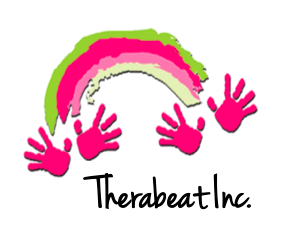How it started:
I first became interested in the Music Therapy (MT) field when my maternal grandmother moved to assisted living in 2015. With my small electric keyboard and guitar in hand, I visited her when she was moved to hospice care. Not knowing I was providing relief through music, I did see the impact that familiar songs had on her level of agitation and her short-term memory. My nana sang Johnny Cash’s “Ring of Fire” without missing a single word. She was then able to have a brief, cognizant, and presently-oriented conversation with me afterwards. I walked out of the room, and through happy tears, told my husband “this is what I want to do. I want to continue helping others through music.”
Applying to Therabeat:
During the pandemic, I completed my 2nd year of graduate school and searched online for MT practices that were beginning to open up again for clinical internships. Therabeat, whose mission statement is “We use music therapy interventions to enhance the lives of individuals of all ages & abilities,” truly caught my attention. This private practice, run and owned by women, was breaking glass ceilings in GA and genuinely caring for their community. As I learned more about each MT-BC on staff, my desire to be an intern with Therabeat grew. I am very blessed that my husband, our dog, and I were able to pack up our life in CA and travel 2,500+ miles across the country to work with and learn from Team Therabeat.
Lessons Learned:
Though Team Therabeat and the internship experience taught me a multitude of lessons, here are two lessons that truly impacted me and my therapeutic practice:
Session plans and ISO-principle
Before each session, I prepared detailed session plans which included an order and clinical breakdown of each intervention. Though I was prepared and had thought through each intervention purposefully, if the client needed to be met where they were at that particular moment, I leaned into the ISO-principle and provided interventions that would benefit the client most where they were. I have learned to prepare a plan, but to also hold space for flexibility so that I can see through the plan and into the therapeutic moments.Co-treating is such a pleasure!
My bachelor’s degree from Saint Mary’s College of California, is in Kinesiology with an emphasis on Health and Human Performance. During internship, I expressed interest in wanting to co-treat with Physical Therapy. I had always wanted to see how both of my career interests could work together, and only In Harmony Pediatric Therapy provided me with the opportunity to see both Physical Therapy and MT in action. During one particular session, I worked with a client on independent living skills while the PT walked the client through an obstacle course. Our obstacle course was specifically set up to cue and prompt recognition of each safety sign I was prompting the client to sing and think about. Together we taught the client what signs to look for and what they mean, while also providing tangible and tactile feedback related to each safety sign with a musical and physical prompt. The purpose of the combined intervention was to improve the client’s self-esteem and provide them with a sense of increased independence when outside of the clinic. I hope to continue co-treating and creating unique interventions in the future.
Thank You Team Therabeat
Thank you Team Therabeat for investing in me, for trusting the care of clients to me, for providing a safe space to learn and grow in therapeutic practice, and for truly providing a wholesome internship experience. I feel more confident in myself, in my ability to turn feedback into practice, and in the prayerful choice to pursue MT as God has called me to.


